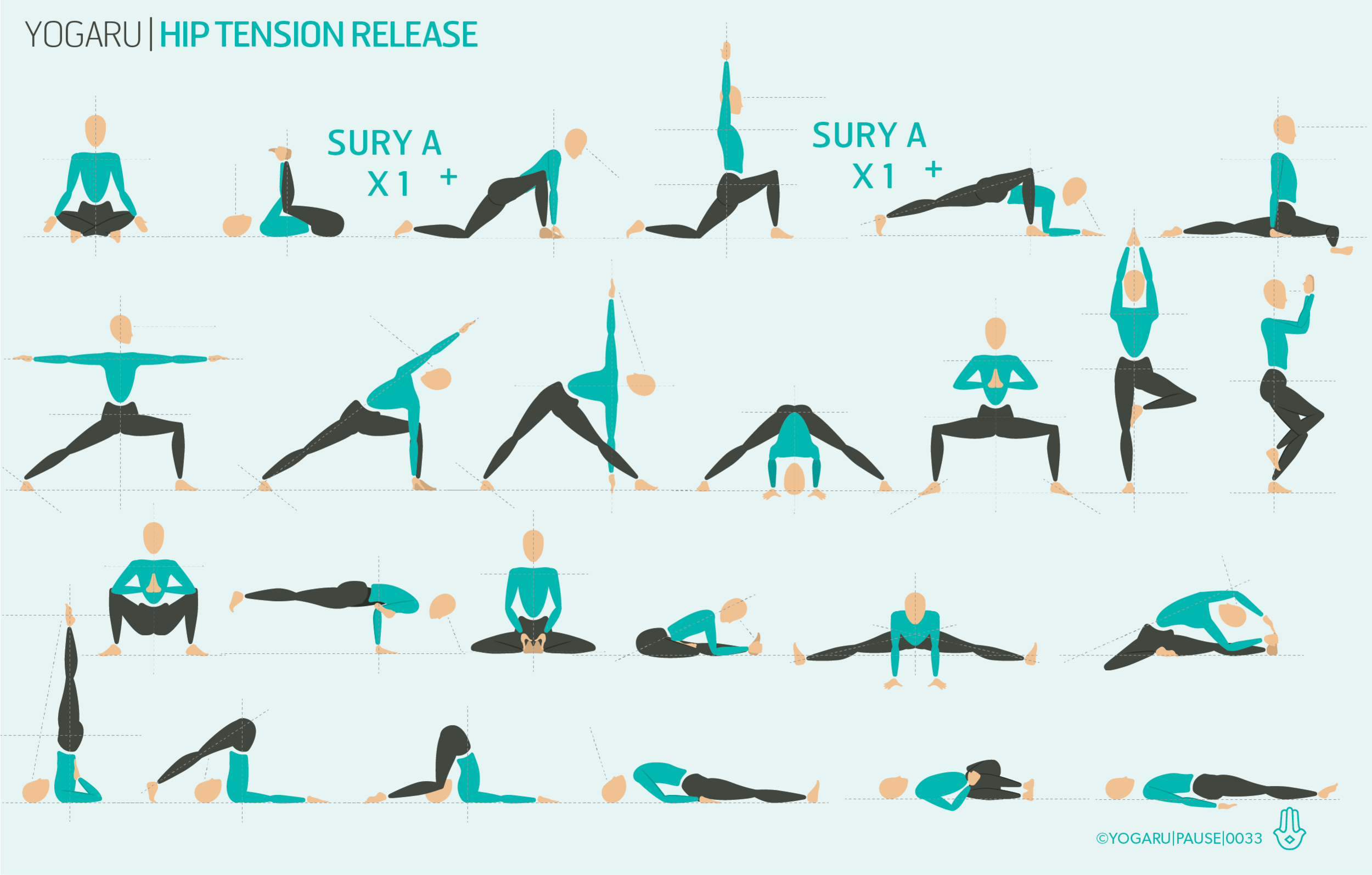ANATOMY OF THE HIP JOINT
The hip joint is our biggest ball and socket joint. It is made up of a complicated network of muscles that build stability in all our movements. When you start to look at the anatomy of the joint it all seems to make perfect sense – until you hit the multi-functional muscles! To maintain stability in movement, each action requires a muscle that contracts – to instigate movement (agonist), and a muscle that stretches – to control the extent of movement (antagonist). But some of the muscles do both! The adductor muscles running down the top of the inner thigh, referred to as the groin, do just that. They adduct (move towards the midline) the leg at the hip joint, causing the glutes to stretch, but they also laterally rotate (rotate outwards) the leg, causing the glutes to contract.
The adductors stabilise the hip joint, hold the inner thighs together and stop the legs from buckling out when we walk. Tight groins can cause an anterior (forward) tilt of he pelvis. If your groins are tight you might notice this anterior tilt in Warrior II, where your pelvis tilts forward and your buttocks stick out, causing you to over-curve your lower back. They can also pull your knee out of alignment and buckle it over to the big-toe side, preventing you from being able to stack your knee safely over your ankle.
EXPLORING HIP OPENERS IN YOUR PRACTICE
We hold a lot of tension in our hips which can be caused by emotional or physical stress. Sitting, running, cycling, all make our hips very tight and limit the range of motion in the joint. Hip openers in your yoga practice aid digestion, relieve stress, release tension and release emotions in a safe environment. Hip opening asana, such as Eka Pada Rajakopotasana/Pigeon, when held for several long, deep breaths, give the muscles time to feel safe and release. It also is a multi-functional asana, in that it stretches the outer hips and inner groin.
You can check to see if your groins are tight by sitting on the ground with the soles of your feet together and drawn towards your groin. Gently drop your knees out on either side, down towards the ground, and notice where you hips start to resist. Print out the above sequence and run through it. Repeat the groin stretch at the end and feel the increased freedom to your inner groin.
To save the images for personal use click and hold down the image until the ‘save image’ option appears; on Mac hold down ‘control’ and click the image to get the option box; on PC right click on the image to get the option box. Scroll down in the ‘option box’ and click ‘save image’.
Ruth Delahunty Yogaru

